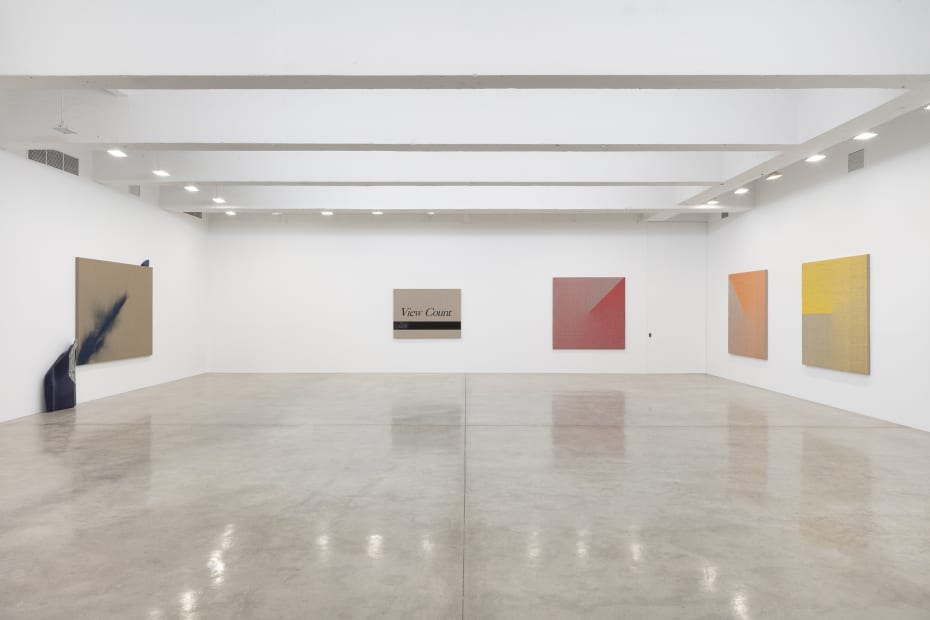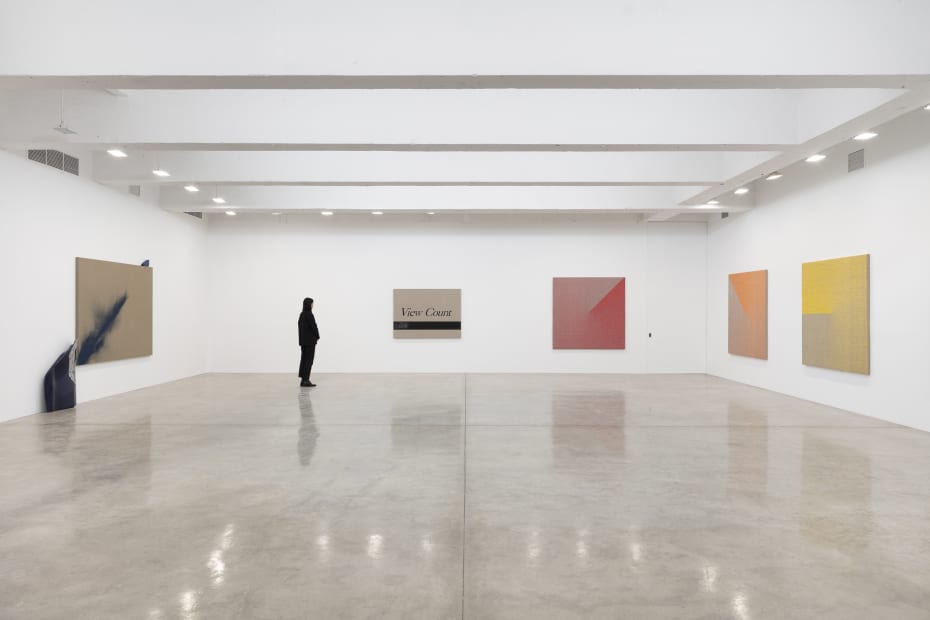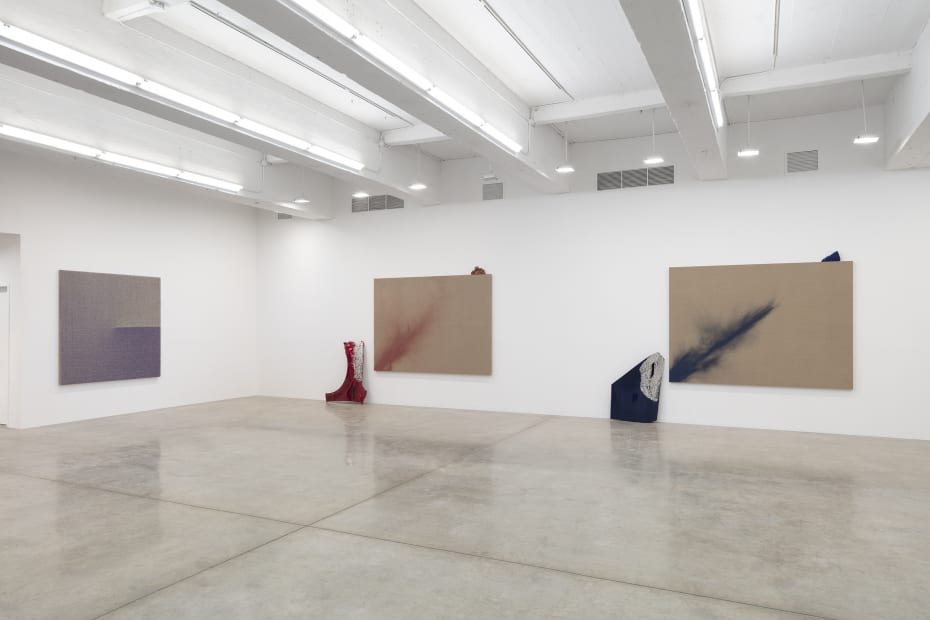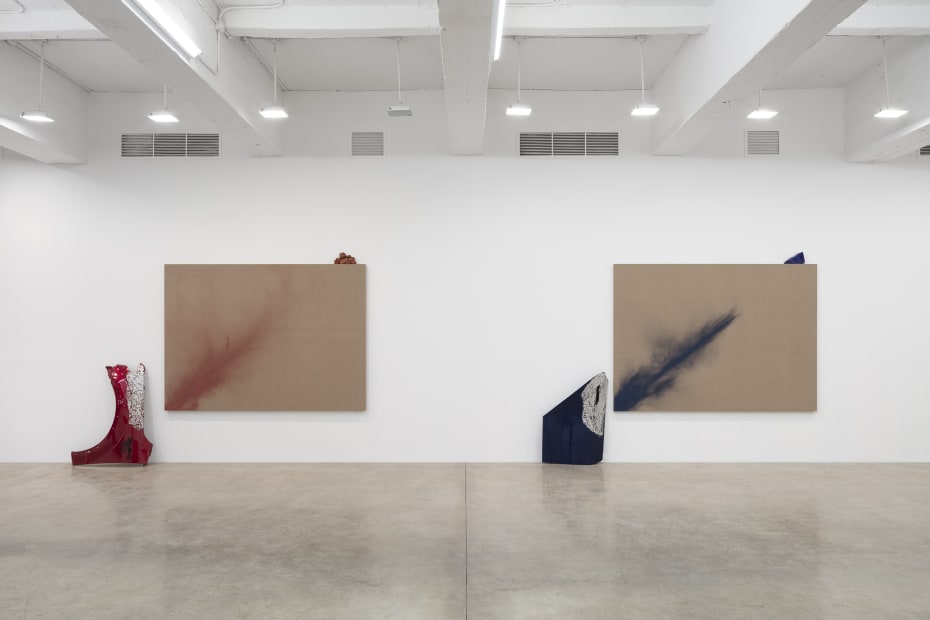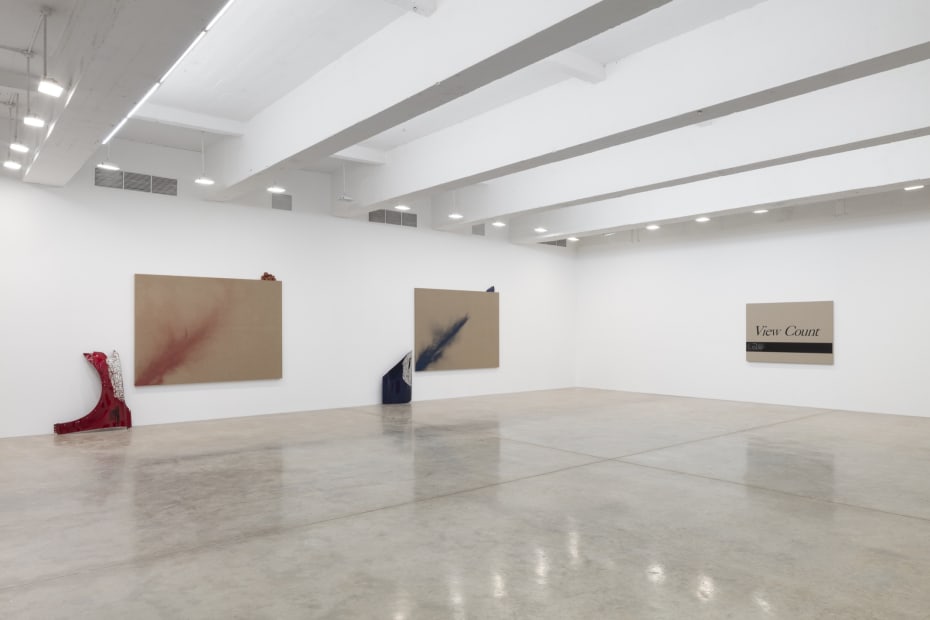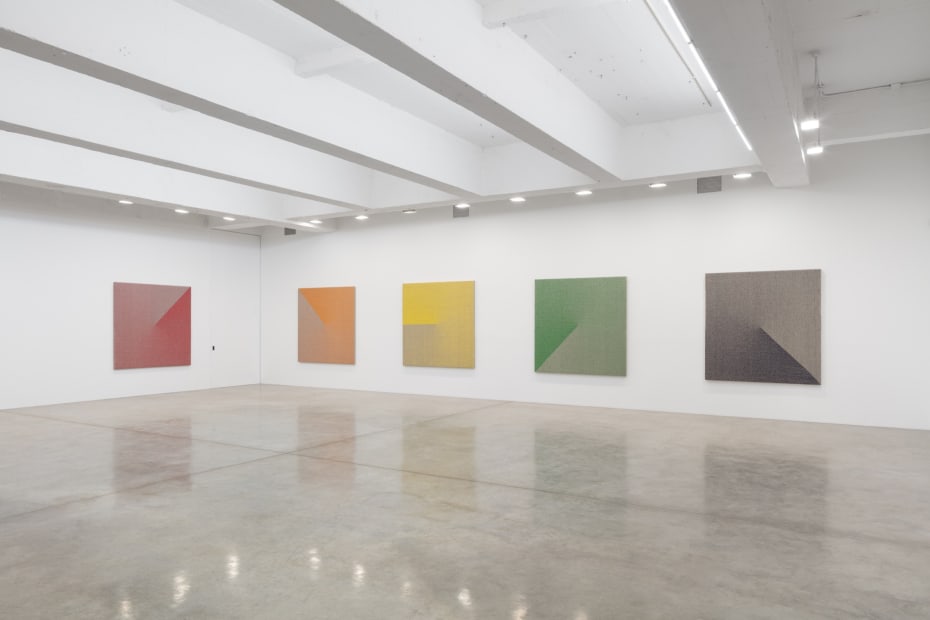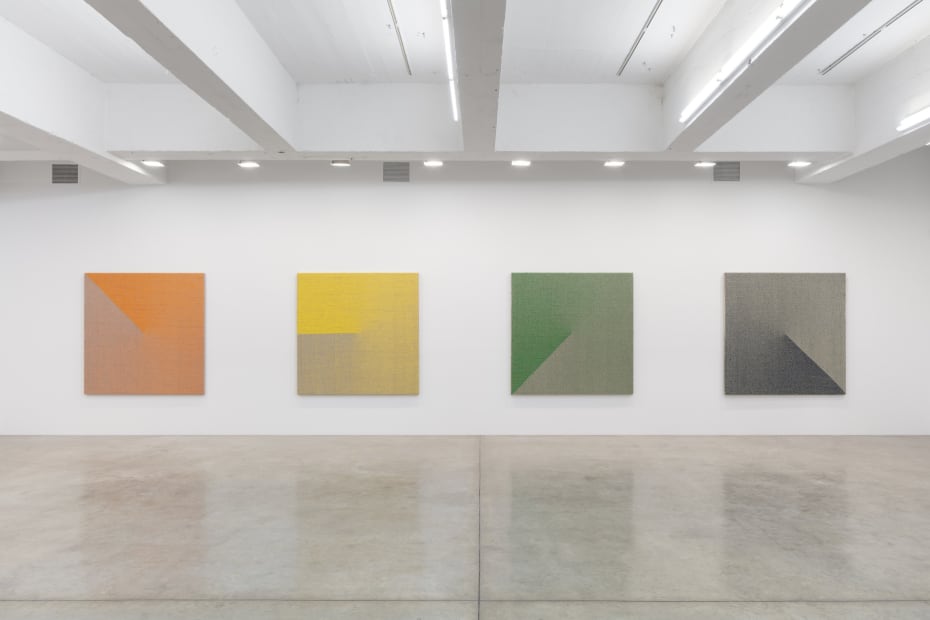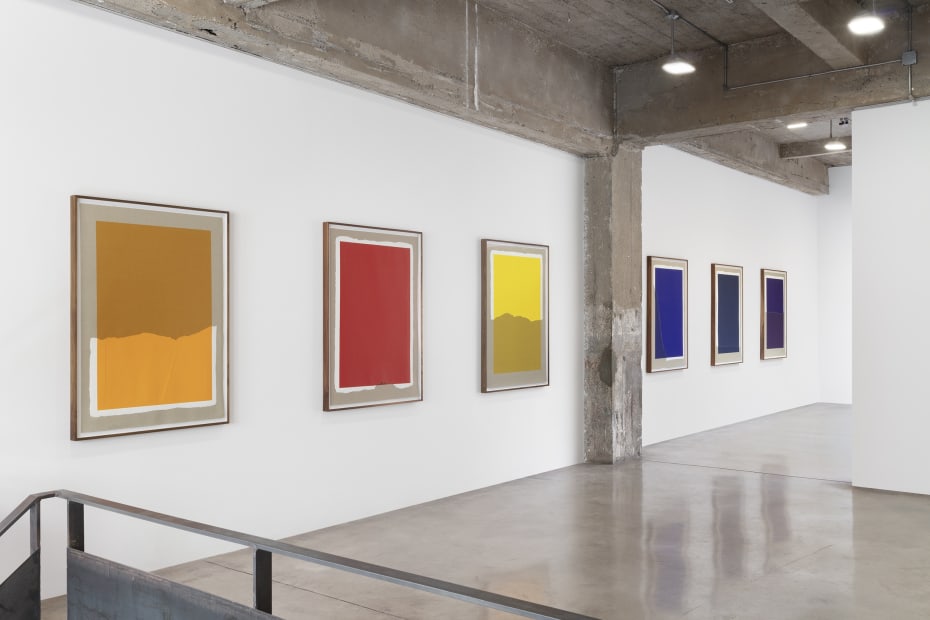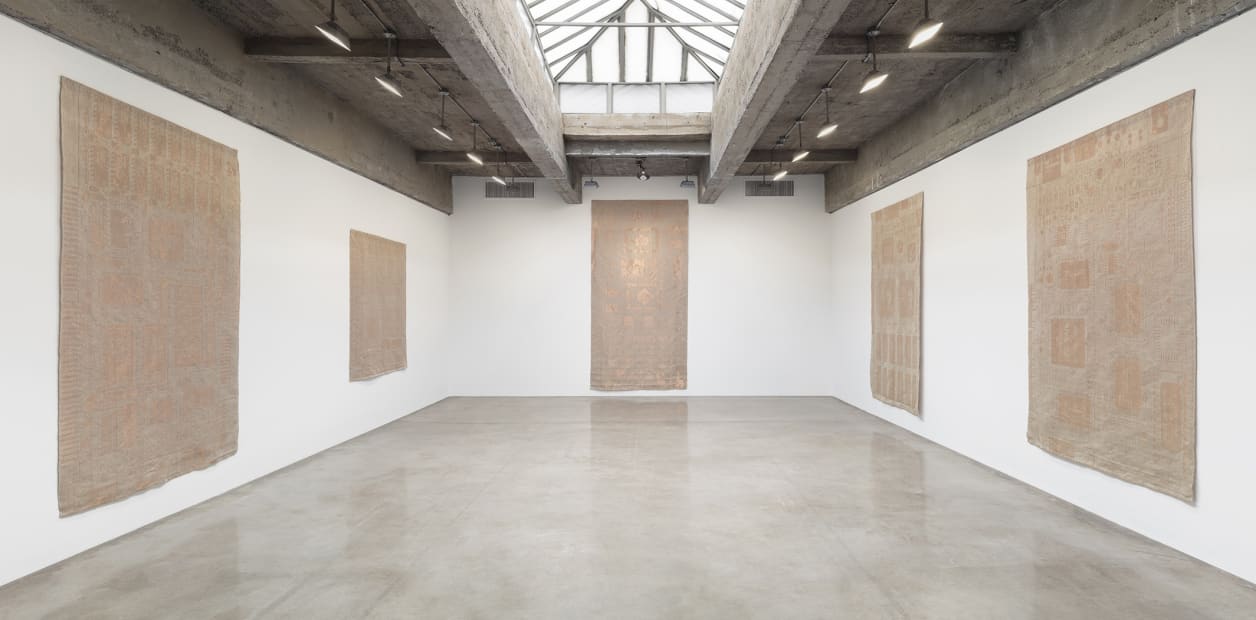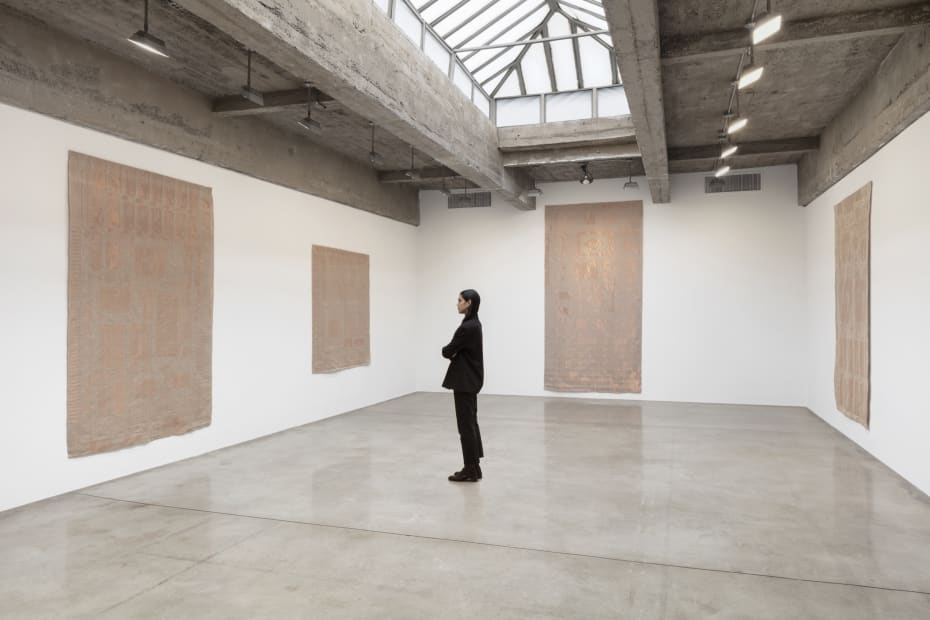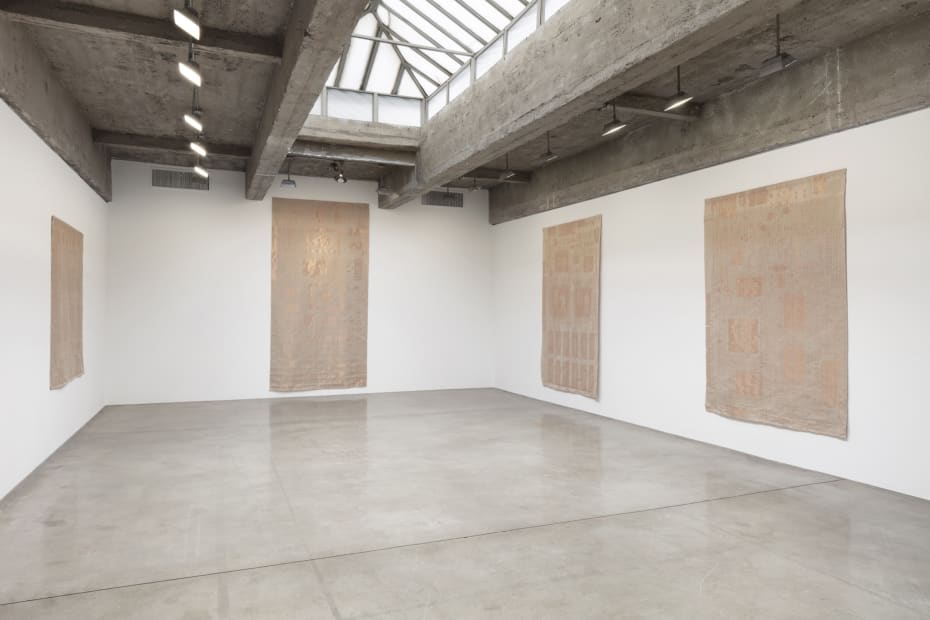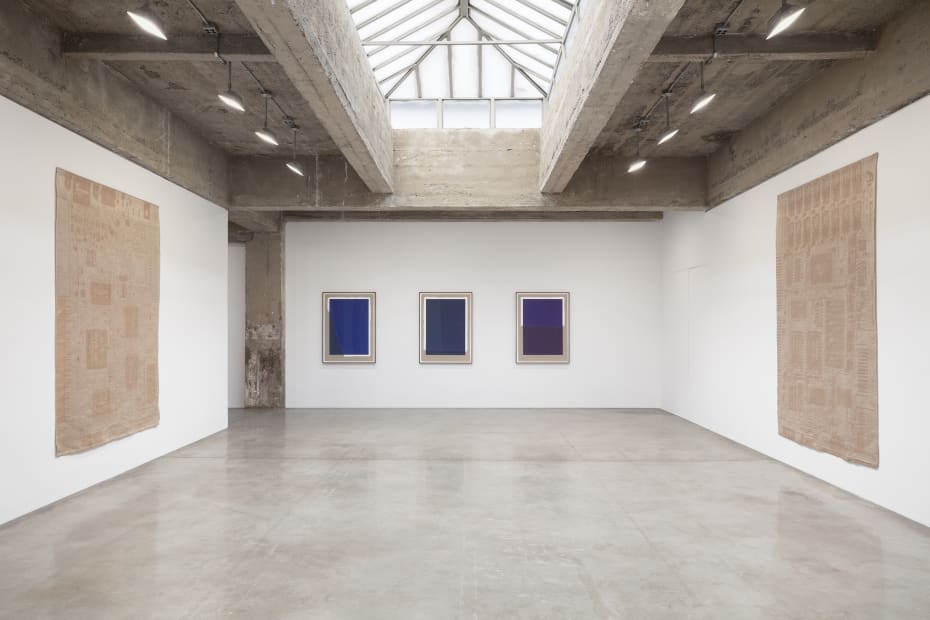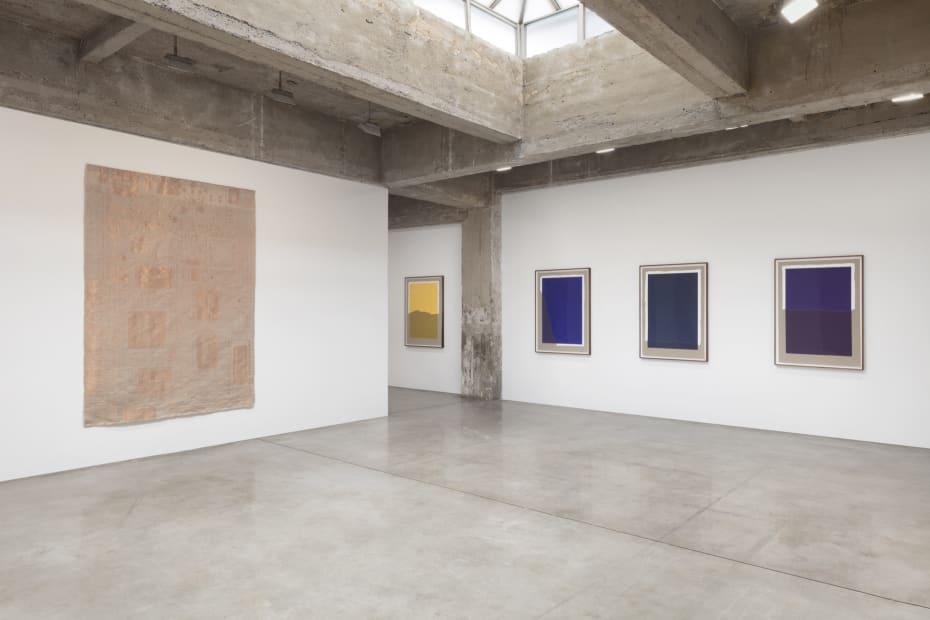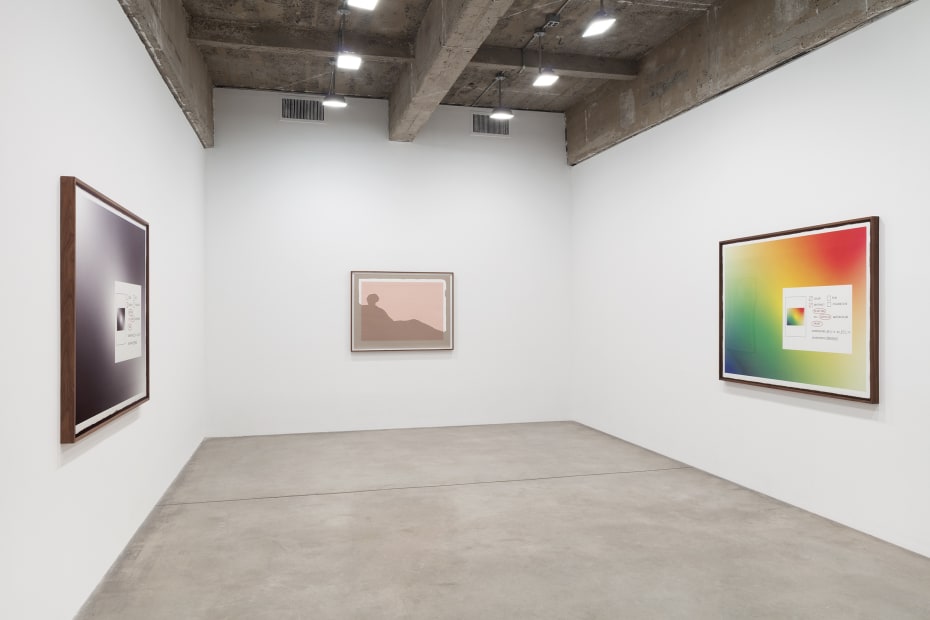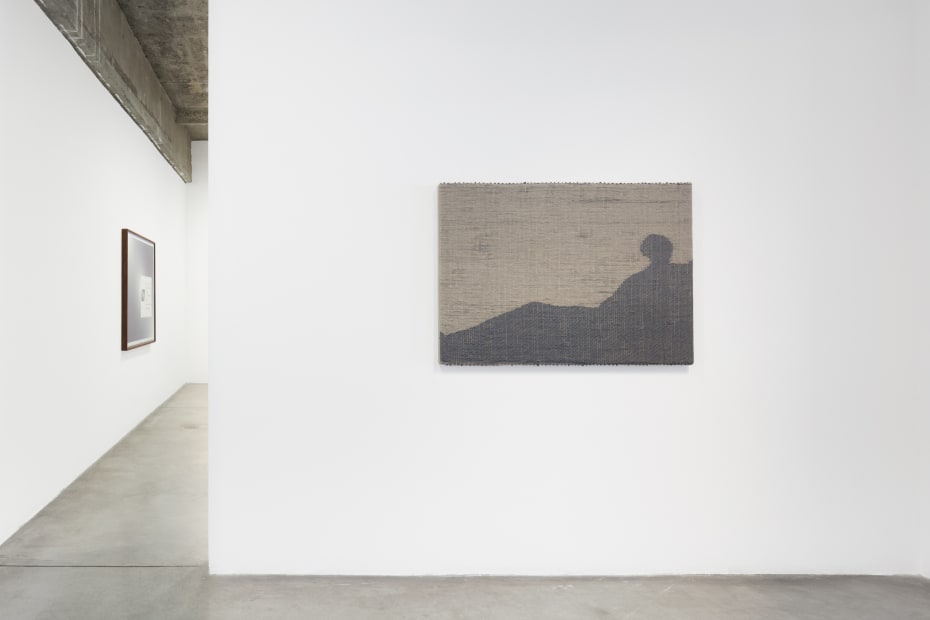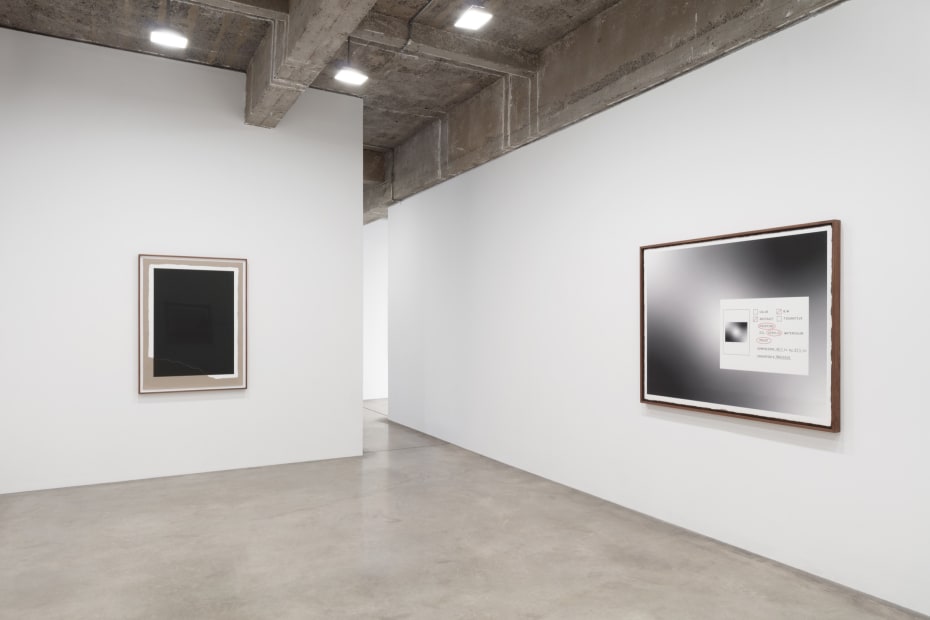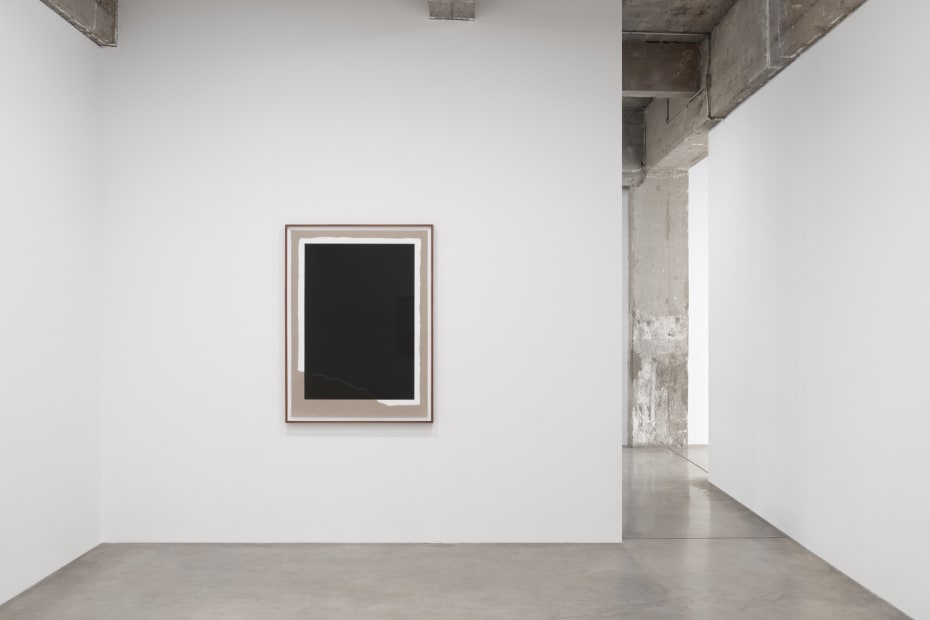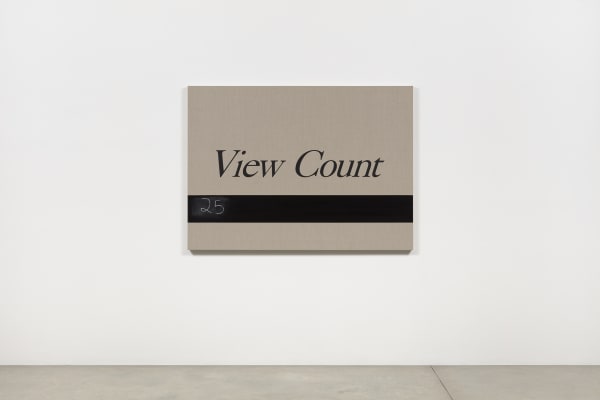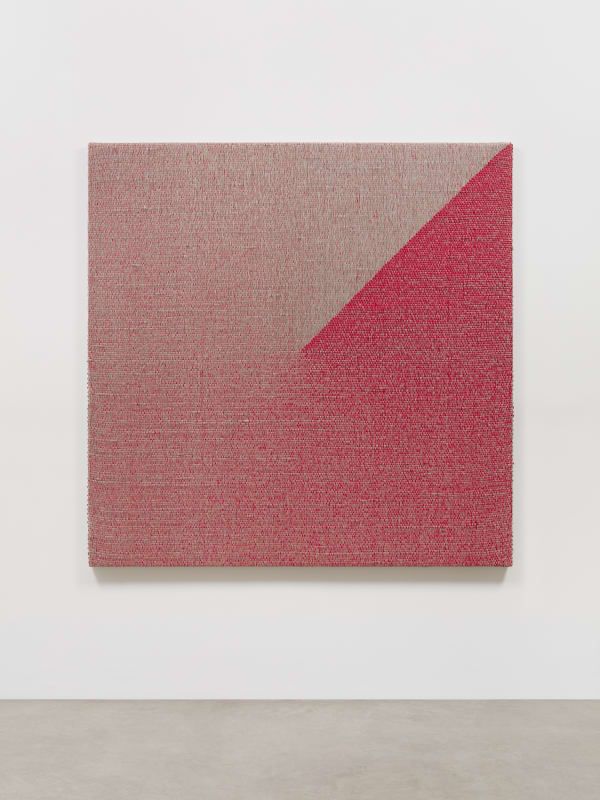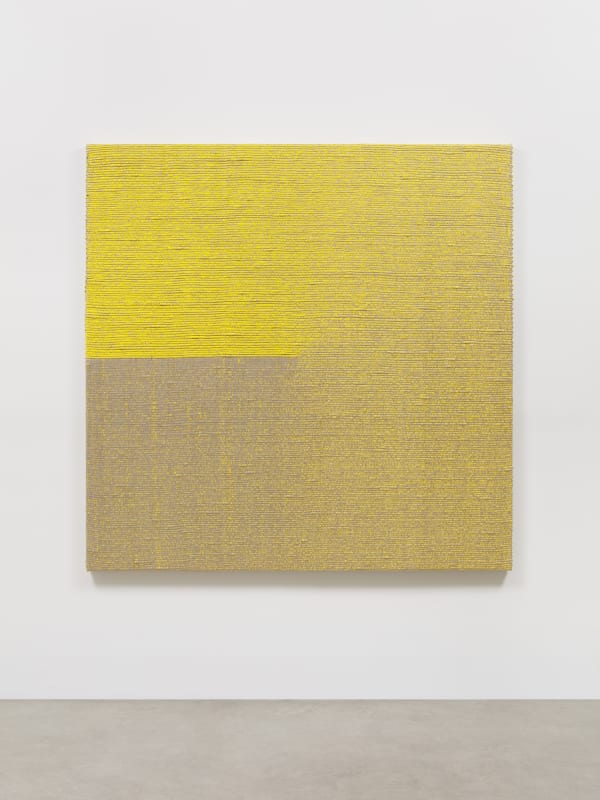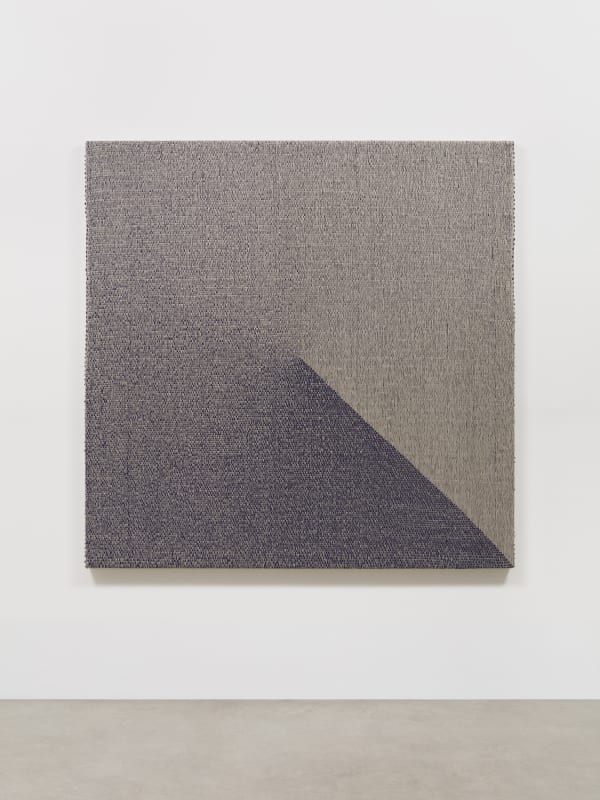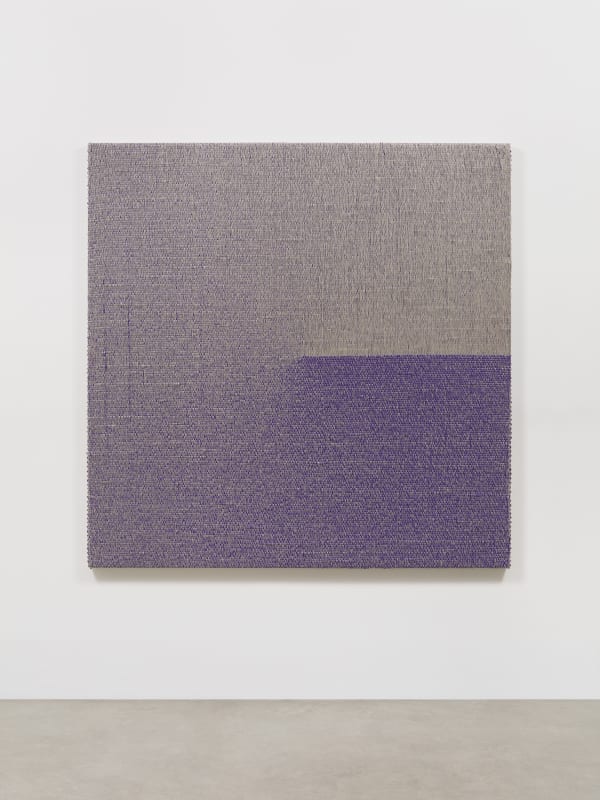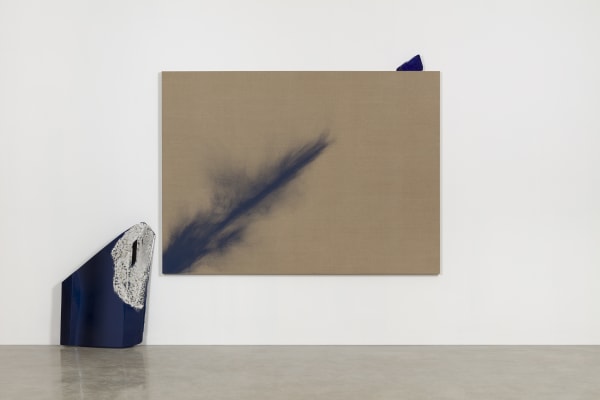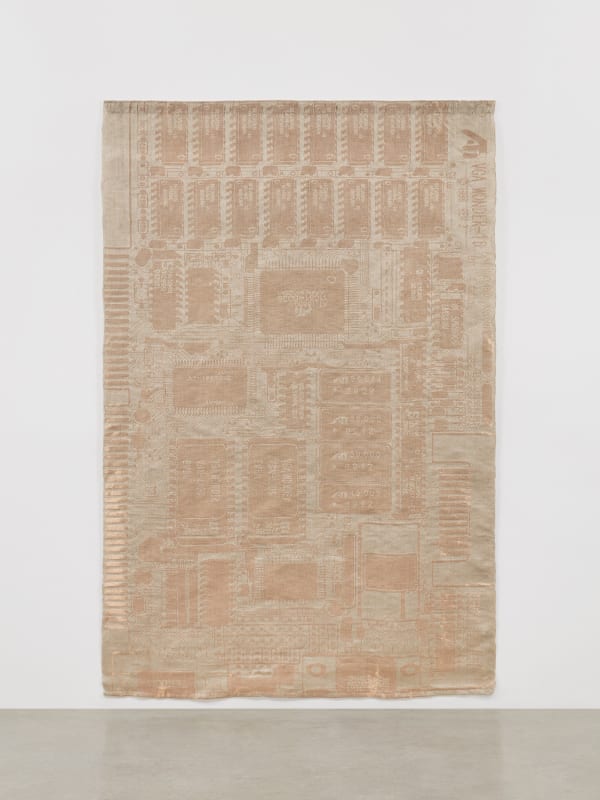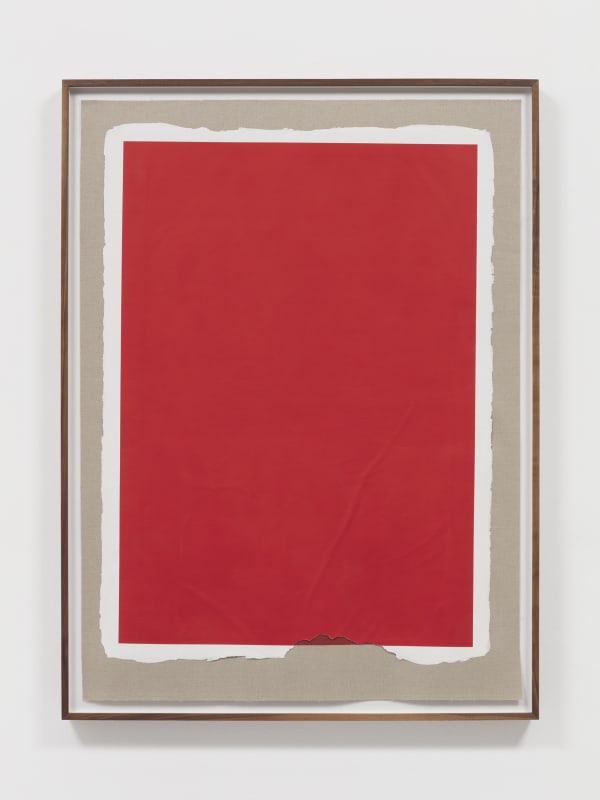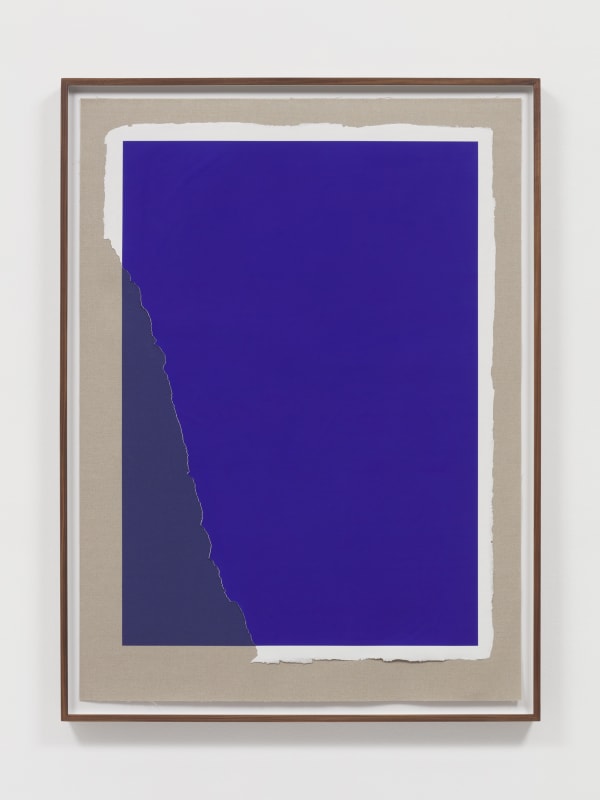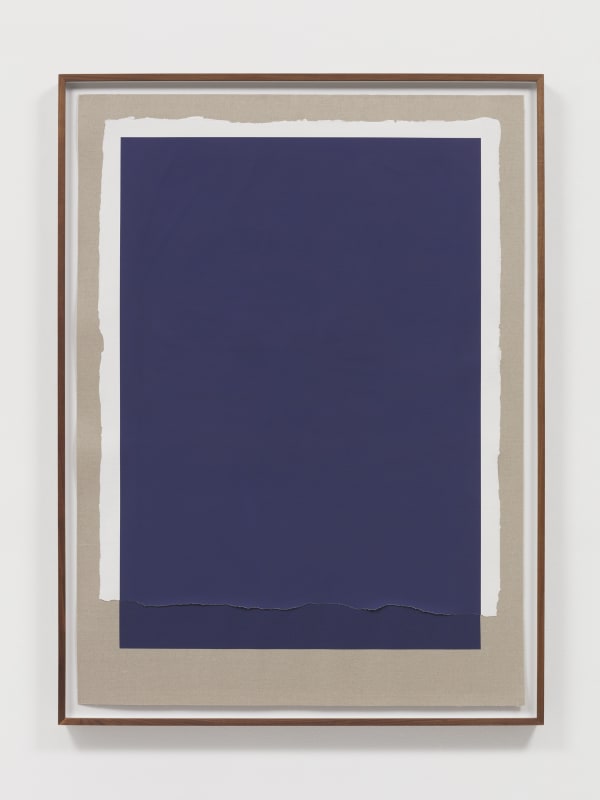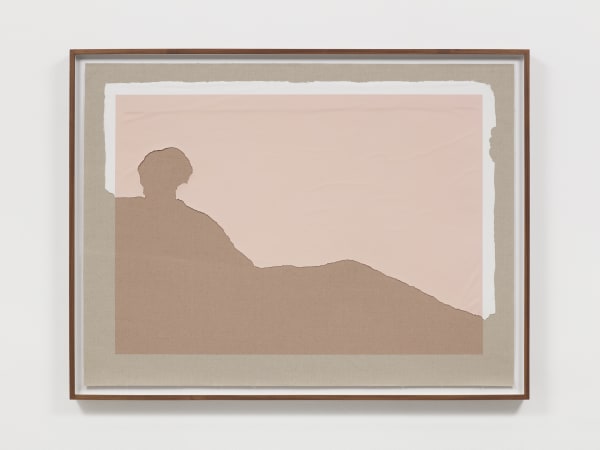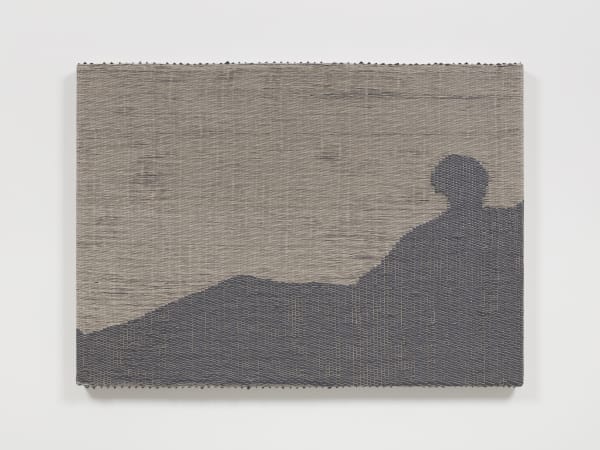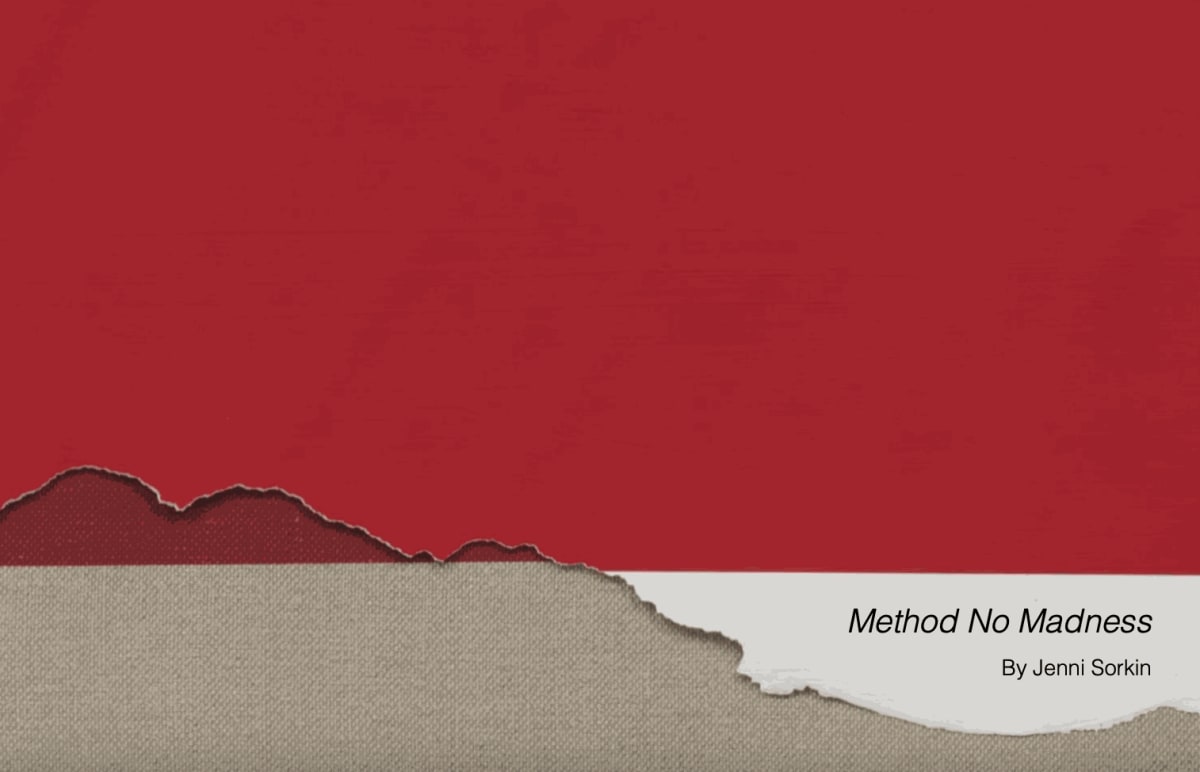Analia Saban: View count: Tanya Bonakdar Gallery, New York
Tanya Bonakdar Gallery is pleased to present Analia Saban, View Count, on view at our New York gallery from May 1 through June 18, 2021. This is the artist’s fourth solo exhibition with the gallery.
"Analia Saban’s new exhibition View Count, engages in a series of material experiments that work through processes and histories relevant to artmaking. As such, she is almost meticulously scientific in her practice, set up at times as a series of trials, playing out each facet carefully." - Jenni Sorkin in Method No Madness
Throughout the exhibition, Analia Saban explores the impact of technology on the art-making process and how our consumption of images has been affected by the hyper-computerization of culture. As the boundaries between the physical and digital world are blurred, we become more reliant on experiencing the world, including artworks, as images on the screens of our phones, or the monitors of our computers. Saban investigates the history and implications of these developments in relation to the history of painting and asks the question: how is technology changing the way we perceive the world?
At the center of the exhibition, the eponymous work View Count features a chalkboard that records the number of people who visit the gallery in person. Manually tallied by the gallery staff, the number on the chalkboard is updated daily to reflect the view count. The audience ultimately becomes part of the work, their physical presence and engagement central to the concept of the work.
Throughout the exhibition, Saban explores the history of painting and sculpture, particularly focusing on the development, categorization and digitization of color. Surrounding View Count, a series of woven paintings is hung clockwise around the gallery space. Dissolving the traditional characteristics of materials, the artist weaves strips of dried paint through linen threads, subverting our preconceived notions of what defines a painting or sculpture. Each work focuses on a primary or secondary color gradient, continuing Saban's investigations into the relationship between paint, pigmentation and canvas. The compositions are derived from image-editing software; the gradients create a clockwise blend of color, suggesting notions of time and duration.
Arising from her interest in the history and evolution of pigmentation, Saban’s Five Thousand Years of Blue (from Lapis Lazuli to Tesla Door) and Twenty Thousand Years of Red (from Red Ochre to Ford F-150 Side Panel) experiment with the sources of color pigments and how computers have broadened the scope of our palette - from the auto industry to artistic practices. Using a scientific approach from the early development of pigment creation, where earthly minerals like rocks were ground to create color, Saban extracts pigments from car parts and applies them to the adjacent canvas. The diagonal line of paint directs the viewer’s eye to a small pile of rocks on the edge of the canvas, connecting us to the past. The use of a Tesla door further illustrates the omnipresence of technology and how it has influenced every industry and object we encounter.
Upstairs, a row of framed monoprints is arranged in a progression of colors, each titled after the technical digital RGB color code and traditional paint color nomenclature they depict, such as Cadmium Red. Even though the new synthetic pigments may not necessarily come from cadmium metals, these titles emphasize the original language that has become standard across mediums. In these works, Saban uses an inkjet printer to ‘paint’ a color block onto a thin, fragmented layer of dried acrylic paint, which acts as paper. Emphasizing the automation of colors produced by a computer, the entire process of painting is digitalized. Creating an artificial representation of color, this programmed process is paired with hand-torn fragments that create compositions alluding to traditional landscape paintings.
Exploring the representation and reproduction of images, Saban uses two different methods to create a subtle but recognizable outline of Édouard Manet’s Olympia. The works mirror each other's negative space to create the presence of the figure. In these works, Saban considers what signifiers are needed to convey the identity of an image or artwork. The artist uses the silhouette as the painting’s metadata, connecting the imagery to our memory of the painting and the many reproductions of it that exist in books, brochures and online.
In the main upstairs gallery, a sanctuary of shimmering tapestries surrounds the viewer. Further to her interest in technology and the progression from analogue to digital methods of image viewing, these works introduce non-traditional materials into the process of tapestry weaving. Thin strips of copper traverse a linen warp to create an intricate design - a representation of iconic computer graphics cards from the 1980s and 90s - each one an important milestone in the development of computer graphics, including the representation of color, 3D digitization and motion simulation for video games. Presented together, these circuit boards reflect the history of how we see images today.
More than two centuries ago, weaving production was accelerated by technological improvements that resulted from the Industrial Revolution. Saban’s loom operates on a similar system. The artist's computerized loom follows a binary code, therefore Saban’s choice of subject matter is not coincidental. Complex computer systems that infiltrate many aspects of our daily lives rely on a basic programmed language that is not so dissimilar to the analogue language of weaving. The confluence of process and content comes to the fore - Saban’s tapestries, made using proto-digital technology, depict graphics cards - the very advancement that translated computational information to images in a digital space. Interested in the pursuit of reality in depictions of the world through our monitors and screens, Saban connects history to material and questions our dependence on technology.
Further investigating the development of classifications and advancements in the computerization of imagery, Saban also explores the storage of digital imagery with two new works depicted within their archiving system, Printed Paint (Color Gradient) and Printed Paint (Black-and-White Gradient). Indicating the color, medium, dimension, and inventory number, these works reflect on the parameters we use to save, store and categorize images and information. Their gradients echo the woven paintings downstairs, displaying the vast and unlimited variations of color represented by a computer program.
Born in 1980 in Buenos Aires, Argentina, Saban currently lives and works in Los Angeles. She received a BFA in Visual Arts from Loyola University in New Orleans in 2001, followed by an MFA in New Genres at the University of California in Los Angeles in 2005. Important solo exhibitions include Analia Saban: Focus at the Modern Art Museum of Fort Worth, Texas in 2019 and Analia Saban at the Blaffer Art Museum, University of Houston, Texas in 2017. Saban’s works are represented in the collections of the Hammer Museum at UCLA, Museum of Contemporary Art, and Los Angeles County Museum of Art in Los Angeles; Hessel Museum of Art at Bard College in New York; Norton Museum of Art in Florida; Centre Pompidou in Paris, and among others.
Installation images: Photo by Pierre Le Hors & Lance Brewer
-
 Analia Saban, View Count, 2021
Analia Saban, View Count, 2021 -
 Analia Saban, Woven Angle Gradient as Weft, Cadmium Red Medium, 2021
Analia Saban, Woven Angle Gradient as Weft, Cadmium Red Medium, 2021 -
 Analia Saban, Woven Angle Gradient as Weft, Cadmium Orange, 2021
Analia Saban, Woven Angle Gradient as Weft, Cadmium Orange, 2021 -
 Analia Saban, Woven Angle Gradient as Weft, Cadmium Yellow Medium, 2021
Analia Saban, Woven Angle Gradient as Weft, Cadmium Yellow Medium, 2021 -
 Analia Saban, Woven Angle Gradient as Weft, Permanent Green Light, 2021
Analia Saban, Woven Angle Gradient as Weft, Permanent Green Light, 2021 -
 Analia Saban, Woven Angle Gradient as Weft, Ultramarine Blue, 2021
Analia Saban, Woven Angle Gradient as Weft, Ultramarine Blue, 2021 -
 Analia Saban, Woven Angle Gradient as Weft, Medium Violet, 2021
Analia Saban, Woven Angle Gradient as Weft, Medium Violet, 2021 -
 Analia Saban, Five Thousand Years of Blue (from Lapis Lazuli to Tesla Door), 2021
Analia Saban, Five Thousand Years of Blue (from Lapis Lazuli to Tesla Door), 2021 -
 Analia Saban, Copper Tapestry (Riva 128 Graphics Card, Nvidia, 1997), 2020
Analia Saban, Copper Tapestry (Riva 128 Graphics Card, Nvidia, 1997), 2020 -
 Analia Saban, Copper Tapestry (ATI Radeon HD 5970 Graphics Card, AMD, 2009), 2020
Analia Saban, Copper Tapestry (ATI Radeon HD 5970 Graphics Card, AMD, 2009), 2020 -
 Analia Saban, Copper Tapestry (VGA Wonder Graphics Card, ATI, 1988), 2020
Analia Saban, Copper Tapestry (VGA Wonder Graphics Card, ATI, 1988), 2020 -
 Analia Saban, Printed Paint (Cadmium Red Medium / Color Mode: RGB: Red:217 - Green:0 - Blue:0)), 2021
Analia Saban, Printed Paint (Cadmium Red Medium / Color Mode: RGB: Red:217 - Green:0 - Blue:0)), 2021 -
 Analia Saban, Printed Paint (Cadmium Orange / Color Mode: RGB (Red:255 – Green:142 – Blue:0)), 2021
Analia Saban, Printed Paint (Cadmium Orange / Color Mode: RGB (Red:255 – Green:142 – Blue:0)), 2021 -
 Analia Saban, Printed Paint (Cadmium Yellow Medium / Color Mode: RGB (Red:255 – Green:224 – Blue:32)), 2021
Analia Saban, Printed Paint (Cadmium Yellow Medium / Color Mode: RGB (Red:255 – Green:224 – Blue:32)), 2021 -
 Analia Saban, Printed Paint (Ultramarine Blue / Color Mode: RGB (Red:0 – Green:48 – Blue:255)), 2021
Analia Saban, Printed Paint (Ultramarine Blue / Color Mode: RGB (Red:0 – Green:48 – Blue:255)), 2021 -
 Analia Saban, Printed Paint (Phthalo Blue Deep / Color Mode: RGB (Red:0 – Green:32 – Blue:160)), 2021
Analia Saban, Printed Paint (Phthalo Blue Deep / Color Mode: RGB (Red:0 – Green:32 – Blue:160)), 2021 -
 Analia Saban, Analia Saban Printed Paint (Medium Violet / Color Mode: RGB (Red:32 – Green:0 – Blue:255)), 2021
Analia Saban, Analia Saban Printed Paint (Medium Violet / Color Mode: RGB (Red:32 – Green:0 – Blue:255)), 2021 -
 Analia Saban, Printed Paint (Carbon Black / Color Mode: RGB (Red:0 – Green:0 – Blue:0)), 2021
Analia Saban, Printed Paint (Carbon Black / Color Mode: RGB (Red:0 – Green:0 – Blue:0)), 2021 -
 Analia Saban, Printed Paint, Olympia (Portrait Tone for Fair Skin / Color Mode: RGB (Red:239 – Green:198 – Blue:196)), 2021
Analia Saban, Printed Paint, Olympia (Portrait Tone for Fair Skin / Color Mode: RGB (Red:239 – Green:198 – Blue:196)), 2021 -
 Analia Saban, Woven Olympia, Gray, 2021
Analia Saban, Woven Olympia, Gray, 2021 -
 Analia Saban, Printed Paint (Color Gradient), 2021
Analia Saban, Printed Paint (Color Gradient), 2021
A walkthrough of Analia Saban's 'View count' at Tanya Bonakdar Gallery in New York, 2021.
